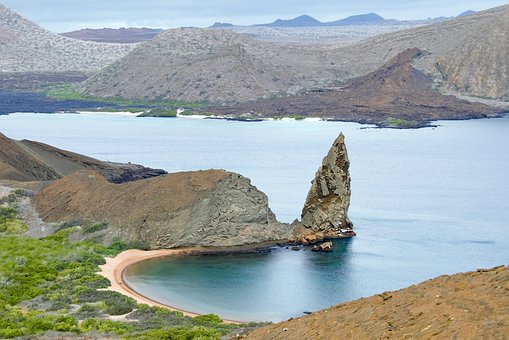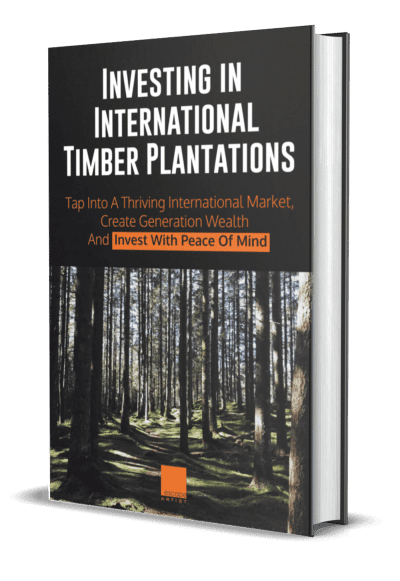Ecuador – You Just Never Know What You Might Dig Up
In retrospect, I can imagine my Editor a little worried about my topic of choice for this report, if he just stops to pause at the title. So, to allay any concerns, no need to worry, we are not talking about the type of “digging” that unearths “skeletons in your closet” or, worse, in your backyard. Everyone, deep sigh of relief…breathe again. The digging to which I refer to is the good, old-fashioned mining industry – as in gold, silver, copper, precious stones and the like.
Let’s be candid, we cover the whole gamut here. Expats from all walks of life roll ashore in Ecuador. Perhaps some would like to participate in the burgeoning mining industry. In fact, not a bad idea at all, since the industry can be extremely lucrative and the current President Correa Administration is trying to encourage greater investment within this industry sector. When profitability crosses opportunity, it is likely something that ought not be overlooked.
Large-scale mining, in Ecuador, is a nascent industry. Perhaps that works to the advantage of the small or mid-sized operations that already thrive here, as well as those expats who seek to explore this business and investment option. For long, mining industry experts have deduced that Ecuador is likely to host large reserves of gold, silver and copper, as an absolute minimum. In fact, Ecuador’s mining chamber of commerce values the country’s mineral wealth at approximately $220 billion (USD). However, large-scale exploration efforts have been limited to support that thesis. A boon of an opportunity for our expat faithful, but a source of some consternation for the existing Administration of President Correa.
It is not that, in any way, President Correa wants to limit small to mid-sized mining operators. To the contrary, President Correa has been a great championship of small business enterprise. However, as Correa searches for permanent and meaningful, long-term solutions to Ecuador’s significant reliance on oil exports for revenue, the large-scale mining sector seems a natural fit, for a potential solution. The economies of scale allow greater revenue opportunities for Ecuador, with the large-scale mining industry operators, as part of that investment tapestry.
With that goal well in mind, President Correa, earlier this year, issued a mining bill for the approval of the Ecuadorian Congress, which sought reforms that benefit both small and large scale mining operations, in Ecuador. With the bill marked as “urgent”, Correa sought to rapidly and cooperatively respond to the requests of mining industry investors.
The two central reforms called for in the legislation were a delay in the windfall tax, until miners first recover their investment, and a ceiling cap set on mining royalties – a much needed reform. Under the then existing mining law, inherited by Correa, miners had a minimum payout in royalties of 5%, but, quite conveniently, no maximum cap had ever been set, by previous administrations. Naturally, such ambiguity allowed for many anxious moments and plenty of “back-room politicking”, leaving this industry sector in a high-risk and awkward position.
With this aggressive legislative push, what Correa had hoped to achieve was to build on the recent success of the El Mirador copper project, a $1.4 billion (USD) investment made by the Chinese-owned EcuaCorriente corporation, in Ecuador’s fledgling mining sector. The elephant that Correa had hoped to bag was Canada’s Kinross Gold Corporation, which had already established exploratory gold mining operations in Ecuador. In fact, Kinross had bought the Fruta del Norte concession for more than $1 billion (USD), making it no minor consideration in its portfolio.
However, in the end, despite the success of Correa’s push for legislative reform, one item the Administration remained inflexible on was the 70% windfall tax. Correa succeeded in pushing through the changes to postpone said tax payments, until all investment funds were duly recovered by mining operators, but he would not budge on wanting to receive an ultimate 70% tax windfall. This figure is high, by internationally accepted standards, and Kinross ultimately balked at paying such an amount. In the end, Kinross chose to walk, writing off approximately $720 million (USD) for its Ecuador operations. This dealt a very real setback to President Correa’s aggressive mining agenda.
Still, from this fledgling industry experience, several positives can be identified. EcuaCorriente, the Chinese firm which garnered the previously mentioned El Mirador copper concession, have expressed renewed interest, in the very attractively priced Fruta del Norte concession. Likewise, corporations from South America, such as Chile’s Codelco, and several Middle Eastern firms are also looking at the site and its possibilities.
Additionally, the Kinross experience drove the positive, now fully approved, legislation to further modernize Ecuador’s mining industry sector. While the honeymoon between Ecuador and Kinross was short-lived, the brief marriage proved to bear positive fruit for Ecuador.
Lastly, remains the very real possibility that relatively small Ecuador, in terms of geographic size, maybe never fully flourishes to be the domain of the large mining industry. While against the grain of both typical mining industry philosophy and the ideal scenario for the Correa Administration, it may prove to be an enticing opportunity for those wishing to establish small to mid-sized mining operations in Ecuador. The recent policy changes are a positive step in the right direction. Perhaps a more nimble and less stockholder driven smaller to mid-sized player could more easily stomach the fairly hefty 70% windfall tax rate. Certainly, if the “big boys” fail to further penetrate the Ecuadorian market in the near future, it certainly opens the door for the mid-sized players and, maybe, even the smaller players, to acquire “big time player” status and, thus, leverage in Ecuador. It is all about whether you want to perceive the “Kinross incident” as the mining tin cup being half full, or half empty.
Experience the Insider community that takes your international lifestyle to the next level. Download your FREE guide
"18 Steps to Implementing Your Plan B" instantly!
Separate from the Kinross experience, Ecuador still enjoys positive, large-scale concession developments such as the Rio Blanco gold-silver project, now in the private hands of a Hong Kong-based entity and the Loma Larga (formerly Quimsacocha) gold-copper-silver mining operations, owned by INV Metals, Inc.
Ultimately, if members of our readership are interested in exploring mining sector initiatives in Ecuador, a few items bear considering. First, Ecuador has been historically plagued by the inaccessibility of the regions where minerals are most likely concentrated. To anyone in the mining industry, this should be somewhat old news, as many of the best global mining sites have tended to lie in very remote and inaccessible regions. More norm than exception, but one needs to be aware of these existing realities in Ecuador.
Also, one needs to understand that biosphere preservation and care is optimally important in eco-conscious Ecuador. Mining operations, without special attention to conservation and pollution control factors, are likely to meet much resistance and, ultimately, may experience a short shelf-life. Respect the environment which produces the bounty and you will likely have little resistance.
Still, while not negating the previous statement, there are regions in Ecuador where indigenous movements will not be welcoming to the encroachment of mining operations, no matter how sensitive to eco-issues or the biosphere, mining operators may prove to be. It warrants performing the appropriate research to best identify these high-risk areas, as it warrants to establish positive and proactive relations with the local leadership of indigenous communities, anywhere that one contemplates mining operations in Ecuador.
Lastly, the Ecuadorian government has strict policies about the legality of mining operations and has sent in the army to shut down illegal gold mining operations throughout Ecuador. The official government statement has literally been, “Ecuador is not a no man’s land.” The message is pretty clear. If you are thinking of establishing mining operations, no matter how small and “under the radar”, you might imagine yourself to be…stop…think twice…and then, don’t. Do it the legal way and you will save much more in heartache, then you will save in funds, with alternate options.
Any further consideration of mining operations in Ecuador will likely have you searching ideal regions for your operations. Mining is a bit like gambling. While you can reduce your risks, there are no sure bets. However, three regions immediately come to mind as improving your odds. A likely consideration of these three regions and others is strongly encouraged.
Since the early 1990s, the Intag region of Imbabura in northwestern Ecuador has been the target of mining exploration. Japanese and then Canadian interests have claimed substantial finds of copper, and have promoted the idea that additional reserves of other metals might be found. It is an area considered worthy of exploration.
Likewise, the Azuay region of Southwest Ecuador i s considered particularly rich when it comes to perspective gold mining operations. Gold deposits, in relatively smaller quantities have been successfully mined for more than a decade. Pan Terra Gold has ongoing operations where it plans to mine 100,000 oz of gold, per year, over a 10-12 year period, minimum. It is an area considered worthy of exploration.
Finally, the Amazon province of Zamora-Chinchipe in Southeast Ecuador is generally considered the most likely locale for the largest reserves of gold, silver and copper. This is the region which hosts what was once the Fruta del Norte Kinross Gold concession, The delicate Amazon setting, offers particularly challenging environmental factors, but the general consensus is that the risk-reward ratio remains extremely positive. It certainly is a region worthy of consideration.
At the end of the day, those with the pioneering spirit to relocate to a “far-off land” like Ecuador, may also have the pioneering spirit to consider virgin mining concessions in Ecuador. The lay of the land looks promising and with a Correa Administration eager to promote the mining industry, this could truly be opportunity knocking. If the USD and other major world currencies, like the Euro, continue to sputter, the precious metals market could regain some of its recent lost lusters, after sharp pricing run-ups. Ecuador may be the right place and this may be the right time. Nothing like an exploratory trip to heighten the senses.
Like Our Articles?
Then make sure to check out our Bookstore... we have titles packed full of premium offshore intel. Instant Download - Print off for your private library before the government demands we take these down!







